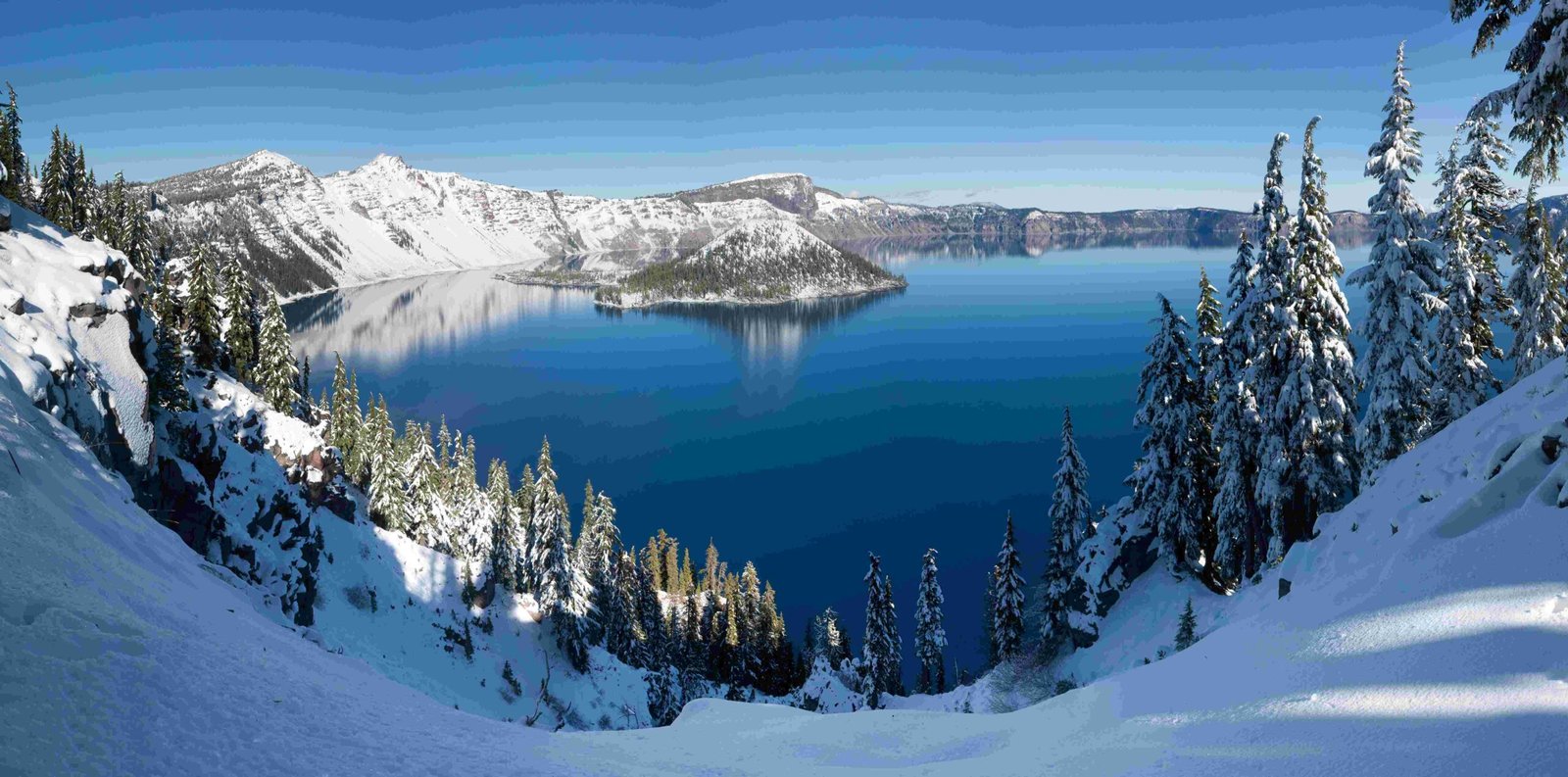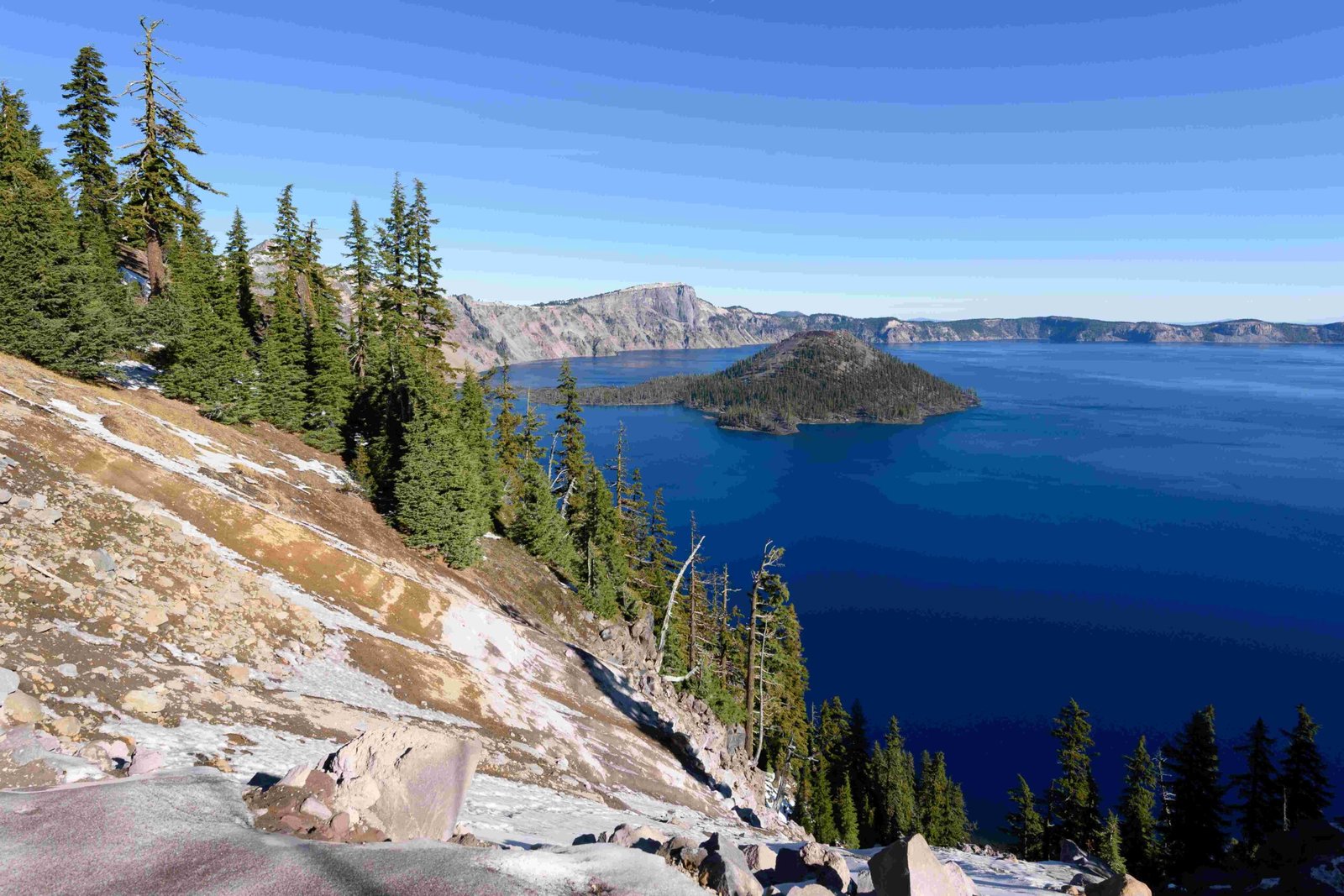Crater Lake in Oregon is a roughly circular lake of extraordinary depth and clarity. Formed by the collapse of an ancient volcano, this natural wonder is renowned for its deep blue waters and stunning geological features. As the deepest lake in the United States, Crater Lake offers visitors a unique glimpse into the volcanic history of the Cascade Range while providing breathtaking views and recreational opportunities.
What Are the Key Measurements of Crater Lake?

Crater Lake’s impressive statistics contribute to its status as a natural marvel:
- Depth: 1,943 feet (592 meters) – the deepest in the United States
- Surface Elevation: 6,173 feet (1,881 meters) above sea level
- Surface Area: 20.6 square miles (53.4 square kilometers)
- Diameter: Approximately 6 miles (10 kilometers)
These measurements highlight the lake’s unique characteristics, making it a focal point for scientific study and tourism alike.
How Was Crater Lake Formed?

The formation of Crater Lake is a testament to the dramatic geological processes that shape our planet:
- Volcanic Origin: Mount Mazama, a massive volcano, stood approximately 12,000 feet tall.
- Catastrophic Eruption: About 7,700 years ago, the volcano erupted violently.
- Caldera Collapse: The eruption led to the collapse of the volcano’s summit, creating a massive caldera.
- Lake Formation: Over time, the caldera filled with snowmelt and rain, forming Crater Lake.
This geological history explains the lake’s circular shape and its impressive depth.
What Hiking Opportunities Exist Around Crater Lake?
Crater Lake National Park offers numerous hiking trails that showcase the lake’s beauty:
Rim Drive Trail
- Length: 33 miles (53 kilometers)
- Difficulty: Moderate
- Features: Encircles the entire lake, offering panoramic views
Cleetwood Cove Trail
- Length: 1.1 miles (1.8 kilometers) one way
- Difficulty: Strenuous
- Unique Aspect: The only trail leading to the lake’s shore
Additional Trails
- Over 90 miles of diverse hiking options
- Range from easy day hikes to challenging backpacking routes
Can Visitors Take Boat Tours on Crater Lake?
Yes, boat tours are available on Crater Lake, offering a unique perspective of this natural wonder:
- Operating Season: Typically June to mid-September
- Duration: Standard tour lasts about 2 hours
- Cost: Approximately $40 per adult (subject to change)
- Highlights: Views of Wizard Island and Phantom Ship
| Tour Type | Duration | Features |
|---|---|---|
| Standard Lake Tour | 2 hours | Scenic lake views |
| Wizard Island Tour | Varies | Includes island stop |
Note: Boat tours are not wheelchair accessible due to the steep shoreline.
What Makes Crater Lake’s Water So Clear and Blue?
The exceptional clarity and deep blue color of Crater Lake’s water are due to several factors:
- Isolation: No rivers flow into or out of the lake, preventing sediment influx.
- Depth: The great depth absorbs many of the sun’s color spectrum.
- Purity: Rainwater and snowmelt are the only sources of water.
- Low Nutrient Levels: Limited organic matter means less algae growth.
These factors combine to create water visibility up to 100 feet deep and a striking blue hue that captivates visitors.
How Does Crater Lake’s Ecosystem Thrive?
Despite its isolation, Crater Lake supports a unique ecosystem:
- Fish Species: Rainbow trout and kokanee salmon (introduced in the early 20th century)
- Plant Life: Various species adapted to the high-altitude environment
- Wildlife: Diverse array of animals in the surrounding forest, including black bears, elk, and numerous bird species
The lake’s ecosystem is carefully managed to maintain its natural balance and pristine condition.
What Are the Best Times to Visit Crater Lake?
The best time to visit Crater Lake depends on your preferences:
- Summer (July-September):
- Peak season with warmest temperatures
- All facilities and roads typically open
-
Best for hiking and boat tours
-
Winter (November-April):
- Snow-covered landscape offers unique beauty
- Limited access due to road closures
-
Opportunities for snowshoeing and cross-country skiing
-
Spring and Fall:
- Less crowded
- Changing landscapes
- Variable weather and accessibility
How Does Climate Change Affect Crater Lake?
Climate change poses several challenges to Crater Lake:
- Water Level Fluctuations: Changing precipitation patterns may affect lake levels.
- Snow Cover Reduction: Warmer temperatures could lead to less snow, impacting winter activities.
- Ecosystem Changes: Shifts in temperature and precipitation may alter plant and animal habitats.
- Increased Fire Risk: Warmer, drier conditions may increase the risk of wildfires in the surrounding forest.
Ongoing research and conservation efforts aim to understand and mitigate these impacts.
Crater Lake, with its roughly circular shape and extraordinary beauty, continues to inspire awe in visitors from around the world. Its unique geology, clear waters, and surrounding ecosystem make it a treasure of the Pacific Northwest and a testament to the power of nature’s forces.

